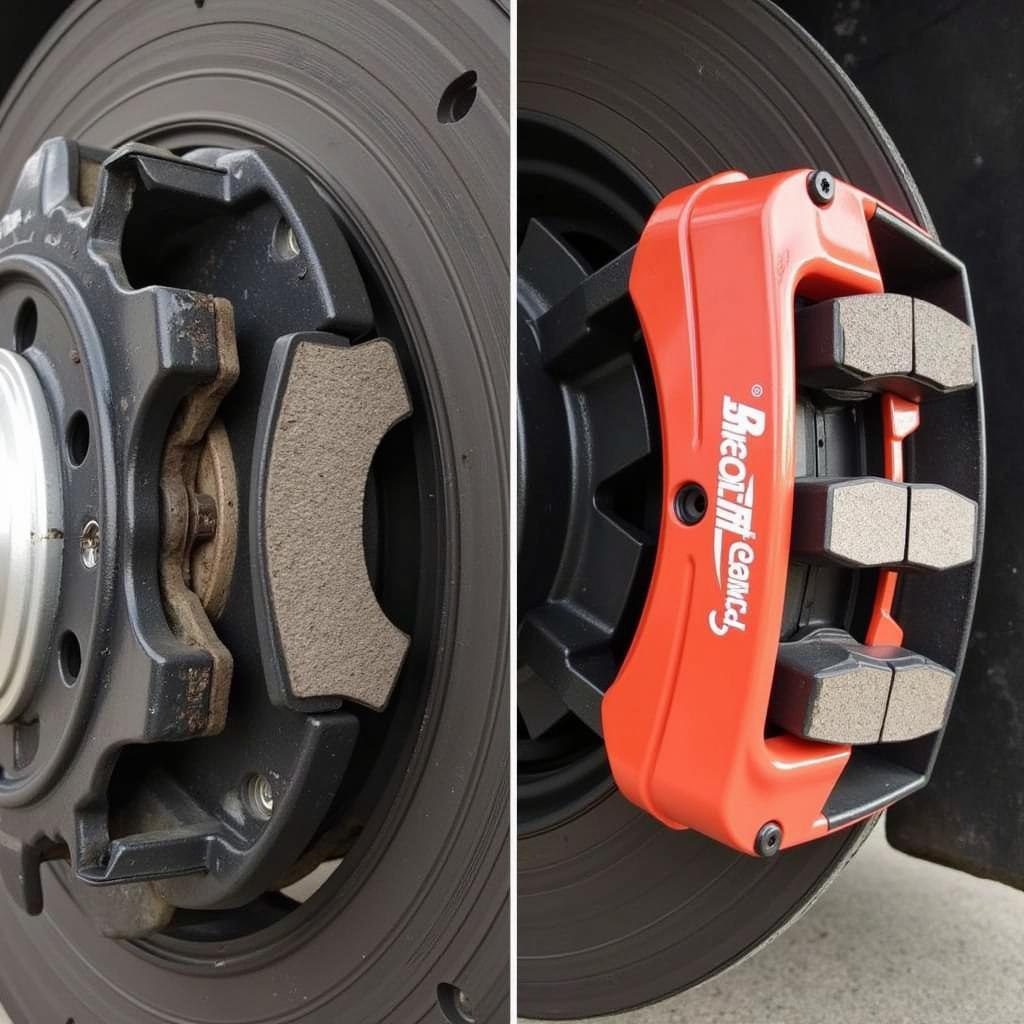Acoustic wear warning brake pads are designed to alert drivers when their brake pads are nearing the end of their lifespan. This audible alert, a high-pitched squeal or scraping sound, signals the need for brake pad replacement to maintain safe braking performance. what is acoustic wear warning on brake pads
Understanding Acoustic Brake Pad Wear Indicators
The squealing sound you hear is not the brake pad itself wearing down, but a small metal indicator, called a wear indicator, making contact with the brake rotor. This indicator is strategically embedded within the brake pad material and is designed to generate noise when the pad material wears thin. This ingenious system provides a clear and timely warning, preventing further damage to the rotor and ensuring optimal braking performance.
Identifying the Squeal: Is it Really Your Brake Pads?
While the tell-tale squeal often signifies worn brake pads, other issues can produce similar sounds. A small rock lodged between the brake pad and rotor, rust buildup on the rotor, or even low-quality brake pads can cause a squealing noise. Proper diagnosis is crucial to avoid unnecessary repairs.
Diagnosing Worn Brake Pads: Beyond the Squeal
Besides the audible warning, several other signs indicate worn brake pads. These include a grinding noise, reduced braking responsiveness, vibration in the brake pedal, and a longer stopping distance. If you experience any of these symptoms, a visual inspection of your brake pads is highly recommended.
What To Look For During a Visual Inspection
Look through the spaces between the spokes of your wheel to examine the brake pads. A thin layer of friction material on the pads indicates they are nearing their replacement point. In some cases, you might even be able to see the metal backing plate of the brake pad, which is a definite sign that replacement is overdue.
Addressing Acoustic Wear Warning Brake Pads: Replacement and Prevention
When your acoustic wear warning system alerts you, prompt action is crucial. Continuing to drive with worn brake pads can damage the rotors, leading to more costly repairs.
Brake Pad Replacement Options
You have two primary options for brake pad replacement: doing it yourself or having a professional mechanic handle the job. Replacing brake pads can be a relatively straightforward DIY project for those with some mechanical aptitude. However, if you’re uncomfortable working on your brakes, seeking professional assistance is always the best course of action. what is acoustic wear warning on brake pads
Extending Brake Pad Life: Practical Tips
Several factors influence brake pad wear, including driving habits, vehicle type, and environmental conditions. Adopting smoother braking techniques, avoiding harsh acceleration and braking, and using engine braking when possible can significantly extend the lifespan of your brake pads.
“Regular brake inspections are crucial,” says automotive expert John Miller, ASE Certified Master Technician. “Catching wear early can prevent costly repairs down the road.”
Conclusion: Listening to Your Brakes Pays Off
Acoustic wear warning brake pads are an essential safety feature that helps prevent costly brake repairs and ensures optimal braking performance. By understanding how this system works and responding promptly to the audible warnings, you can keep your vehicle safe and avoid potential hazards on the road. Addressing acoustic wear warning brake pads is a small investment that pays off in terms of safety and peace of mind.
 New brake pads installed on a car
New brake pads installed on a car
FAQs: Acoustic Wear Warning Brake Pads
-
How often should I check my brake pads? It’s recommended to visually inspect your brake pads every six months or 10,000 miles.
-
Can I replace just one brake pad? It’s best practice to replace brake pads in axle sets (both front or both rear) to maintain balanced braking.
-
What type of brake pads should I choose? Consult your vehicle’s owner’s manual or a qualified mechanic for recommendations on the best brake pad type for your driving needs.
-
What does a grinding noise indicate? A grinding noise usually means the brake pads are completely worn, and the metal backing plate is contacting the rotor. This requires immediate attention.
-
How much does a brake pad replacement cost? The cost varies depending on the vehicle make and model and whether you choose DIY or professional installation.
-
Can I drive with worn brake pads? Driving with worn brake pads is extremely dangerous and can lead to brake failure. Replace them immediately.
-
Why are my new brake pads squealing? New brake pads can sometimes squeal due to break-in period, moisture, or other factors. If the squealing persists, consult a mechanic.
“Ignoring the squeal can lead to rotor damage, increasing repair costs significantly,” warns Jane Doe, Lead Technician at Auto Experts Inc. Remember, addressing brake issues promptly saves you money and keeps you safe on the road.


